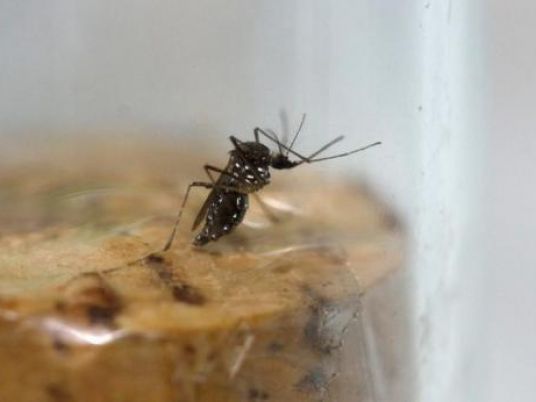
Global health officials are racing to better understand the Zika virus behind a major outbreak that began in Brazil last year and has spread to almost 60 countries.
The following are some questions and answers about the virus and current outbreak:
How do people become infected?
Zika is transmitted to people through the bite of infected female mosquitoes, primarily the Aedes aegypti mosquito, the same type that spreads dengue, chikungunya and yellow fever. The Pan American Health Organization (PAHO) said Aedes aegypti mosquitoes are found in all countries in the Americas except Canada and continental Chile, and the virus will likely reach all countries and territories of the region where Aedes mosquitoes are found. The virus can also be transmitted through sex, from either a male or female partner who has been infected, and a few cases of apparent infection via blood transfusion have been reported.
How do you treat Zika?
There is no treatment or vaccine for Zika infection. Companies and scientists are racing to develop a safe and effective vaccine for Zika, but a preventative shot is not expected to be ready for widespread use for at least two or three years.
How dangerous is it?
The U.S. Centers for Disease Control and Prevention concluded that infection with the Zika virus in pregnant women is a cause of the birth defect microcephaly, a condition defined by unusually small heads that can result in developmental problems, and other severe brain abnormalities in babies. The CDC said that since the causal relationship had been established, several important questions must still be answered with studies that could take years.
The World Health Organization in an updated assessment said the "most likely explanation" is that Zika virus infection during pregnancy is a cause of congenital brain abnormalities including microcephaly. In addition, the agency said infection is a trigger of Guillain-Barre syndrome (GBS), a rare neurological disorder that can result in paralysis.
The update from the WHO came after considering months of research. Its previous statement, based on a rapid assessment of evidence, said there was strong scientific consensus that Zika virus caused GBS, microcephaly and other neurological disorders.
Brazil recently reported 1,949 confirmed cases of microcephaly believed to be linked to Zika infections in pregnant women. It is investigating more than 3,030 suspected cases of microcephaly.
Current research indicates the greatest microcephaly risk is associated with infection during the first trimester of pregnancy, but health officials have warned an impact could be seen in later weeks. Recent studies have shown evidence of Zika in amniotic fluid, placenta and fetal brain tissue.
What are the symptoms of Zika infection?
People infected with Zika may have a mild fever, skin rash, conjunctivitis, muscle and joint pain and fatigue that can last for two to seven days. But as many as 80 percent of people infected never develop symptoms.
How can Zika be contained?
Efforts to control the spread of the virus focus on eliminating mosquito breeding sites and taking precautions against mosquito bites such as using insect repellent and mosquito nets. U.S. and international health officials have advised pregnant women to avoid travel to Latin American and Caribbean countries, sections of Miami, Florida in the United States and Singapore where they may be exposed to Zika. They are also advising that men and women who have traveled to Zika outbreak areas use condoms or abstain from sex for six months to prevent sexual transmission of the virus.
How widespread is the outbreak?
Active Zika outbreaks have been reported in at least 59 countries or territories, most of them in the Americas, according to the U.S. Centers for Disease Control and Prevention (CDC). Brazil has been the country most affected.
Africa (1): Cape Verde
Americas (49): Anguilla, Antigua and Barbuda, Argentina, Aruba, The Bahamas, Barbados, Belize, Bolivia, Bonaire, Brazil, British Virgin Islands, Cayman Islands, Colombia, Costa Rica, Cuba, Curaçao, Dominica, Dominican Republic, Ecuador, El Salvador, French Guiana, Grenada, Guadeloupe, Guatemala, Guyana, Haiti, Honduras, Jamaica, Martinique, Mexico, Nicaragua, Panama, Paraguay, Peru, Saba, Puerto Rico, Saint Barthelmy, Saint Lucia, Saint Martin, Saint Vincent and the Grenadines, Saint Eustatius, St. Maarten, St. Kitts and Nevis, Suriname, Trinidad and Tobago, Turks and Caicos, United States, U.S. Virgin Islands and Venezuela.
Asia (1): Singapore
Oceania/Pacific Islands (8): American Samoa, Fiji, Kosrae, Federated States of Micronesia, Marshall Islands, New Caledonia, Papua New Guinea, Samoa and Tonga.
What is the history of the Zika virus?
The Zika virus is found in tropical locales with large mosquito populations. Outbreaks of Zika have been recorded in Africa, the Americas, Southern Asia and the Western Pacific. The virus was first identified in Uganda in 1947 in rhesus monkeys and was first identified in people in 1952 in Uganda and Tanzania, according to the WHO.
What other complications are associated with Zika?
Zika has also been associated with other neurological disorders, including serious brain and spinal cord infections. The long-term health consequences of Zika infection are unclear. Other uncertainties surround the incubation period of the virus and how Zika interacts with other viruses that are transmitted by mosquitoes, such as dengue.




